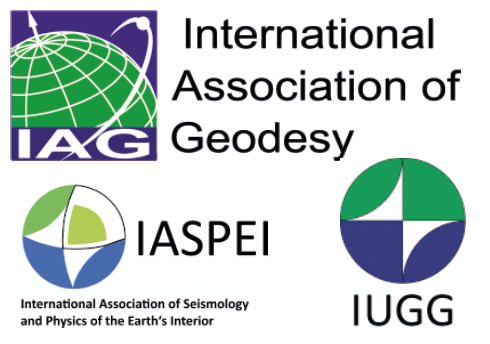Subcommission 3.5 (Joint IAG-IASPEI) Terms of Reference
Space and terrestrial geodetic techniques provide key observations to investigate a broad range of geophysical processes, thanks to their high accuracy, precision, and reliable georeferencing. Thanks to the technological evolution witnessed in the past decades, crustal movements of few millimeters can be now detected and monitored over time, opening new prospects for the study of Earth kinematics and geodynamics. Among their many applications, geodetic measurements can now contribute to the study of the different phases of the seismic cycle, as they allow recording static and dynamic displacements during large earthquakes, as well as the slow postseismic and interseismic deformation. However, the foundation for fully exploiting the potential of geodetic measurements is the development of a multidisciplinary approach to their interpretation. The joint IAG-IASPEI SC on Seismogeodesy aims to facilitate the cooperation between the geodetic and the seismological communities to improve our current understanding of the different seismic processes. The investigated phenomena range from large destructive events, to slow earthquakes and tremors. The works of the SC focus on both theoretical aspects and observational challenges. Particular effort is dedicated to identifying gaps of knowledge and opportunity for progress, particularly in the field of hazard assessment and early warning systems.
- Objectives
Objectives of SC 3.5 include:
• to actively encourage the cooperation between all geoscientists studying the plate boundary deformation zones, by promoting the exploitation of synergies between different fields;
• to reinforce joint and integrated geodetic and seismological monitoring of seismically active areas by increasing and/or developing infrastructures dedicated to broadband observations from the seismic wave band to the permanent displacement;
• to be a reference group for the integration of the most advanced geodetic and geophysical techniques by developing consistent methodologies for data reduction, analysis, integration, and interpretation;
• to act as a forum for discussion and scientific support for international geoscientists investigating the kinematics and mechanics of the plate boundary deformation zone;
• to promote the use of standard procedures for geodetic data acquisition, quality evaluation, and processing, particularly GNSS data and InSAR data;
• to promote earthquake geodesy, the study of seismically active regions with large earthquake potential, and geodetic application to early warning system of earthquakes and tsunamis for hazard mitigation;
• to promote the role of geodesy in tectonic studies for understanding the seismic cycle, transient and instantaneous deformation, and creeping versus seismic slip on faults.
- Program of Activities
• Building on the experience of the WEGENER Initiative, to continue as a framework for geodetic cooperation in the study of the plate boundary zones.
• To develop scientific programs in earthquake geodesy for subduction zones and possible occurrence of giant earthquakes and associated tsunamis.
• To foster the use of space-borne, airborne, marine and hybrid techniques such as GNSS, LIDAR, GNSS-Acoustic, seafloor pressure gauges, radar, optical, and gravity satellite missions including GOCE, GRACE, ENVISAT, SENTINELLE, ALOS, etc. for earth observation.
• To define effective integrated observational strategies for these techniques to reliably identify and monitor crustal movements and gravity variations over all time scales.
• To facilitate and stimulate the integrated exploitation of data from different techniques in the analysis and interpretation of geo-processes.
• To organize periodic workshops and meetings with special emphasis on interdisciplinary research and interpretation and modeling issues.
• To organize special sessions at international meetings.
• To publish the outcome of the researches, either as stand-alone publications or as proceedings or special issues of scientific journals.
